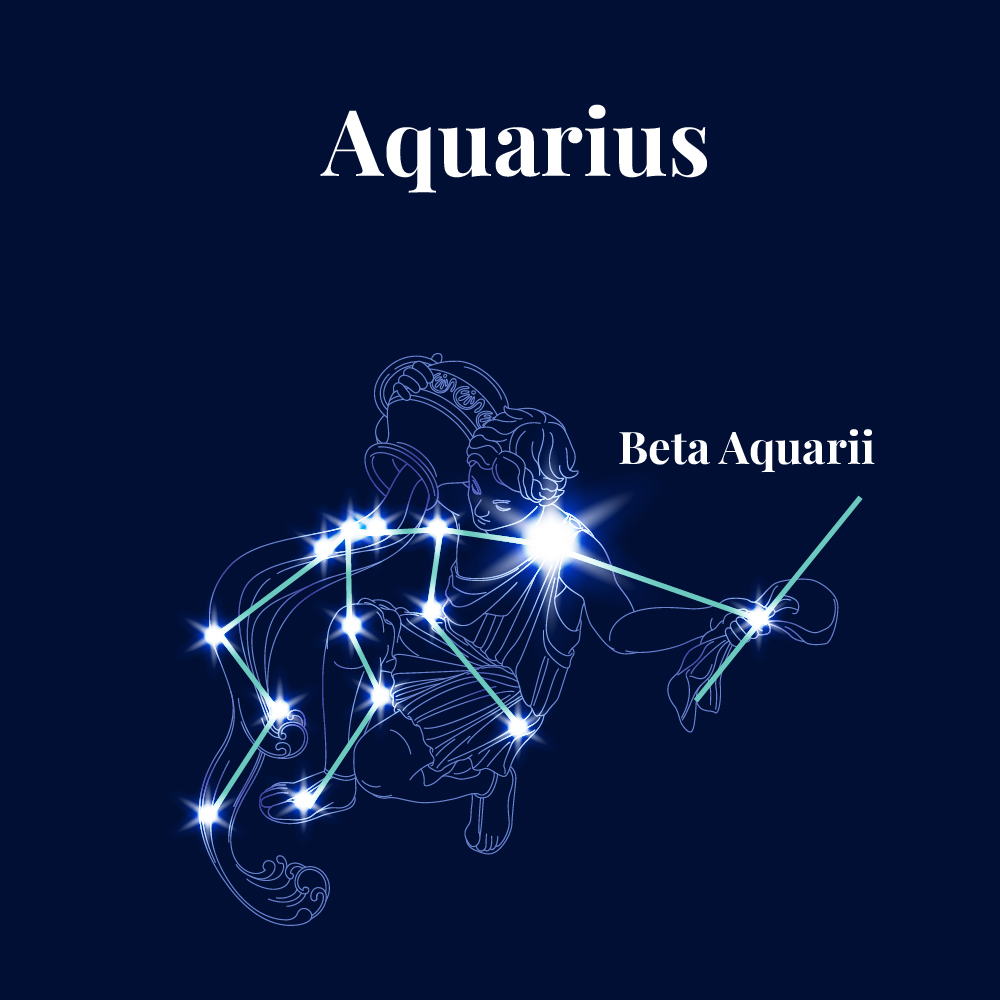The Water Bearer
Table of Contents
The constellation Aquarius, often referred to as the Water Bearer, is a fascinating feature of the night sky with a rich history and notable astronomical significance. Located in the southern hemisphere, Aquarius is one of the 12 zodiac constellations, lying in a region of the sky often referred to as the Sea. This area is populated by constellations with water-related themes, such as Pisces (the fish), Eridanus (the river), and Cetus (the whale). Aquarius is one of the oldest documented constellations, first catalogued by the Greek astronomer Ptolemy in the 2nd century.
Origins of Constellation Aquarius
The name Aquarius is Latin for “water-bearer” or “cup-bearer”. This depiction aligns with the constellation’s appearance, which resembles a man pouring water from an amphora. The constellation’s Latin name, Aquarii, is used in star designations within the constellation. The International Astronomical Union (IAU) adopted the three-letter abbreviation “Aqr” for Aquarius in 1922.
Greek Mythology
In Greek mythology, Aquarius is often associated with Ganymede, the beautiful son of King Tros. Ganymede was so striking that he caught the eye of Zeus, who transformed into an eagle (represented by the constellation Aquila) and abducted Ganymede to Olympus. There, Ganymede served as the cup-bearer to the gods, a role symbolized by Aquarius.
Another Greek tale links Aquarius to Deucalion, son of Prometheus, who survived a great flood with his wife, Pyrrha. This myth parallels the story of Noah’s Ark, with Deucalion and Pyrrha repopulating the Earth by throwing stones that turned into people.
Babylonian and Egyptian Mythology
In Babylonian mythology, Aquarius is identified as “GU.LA”, meaning “the great one,” and is associated with the god Ea, the god of water.
In Egyptian mythology, Aquarius represents the god of the Nile. The Nile was crucial to Egyptian civilization, and Aquarius’ presence in the sky heralded the annual flooding that brought fertile soil and prosperity.
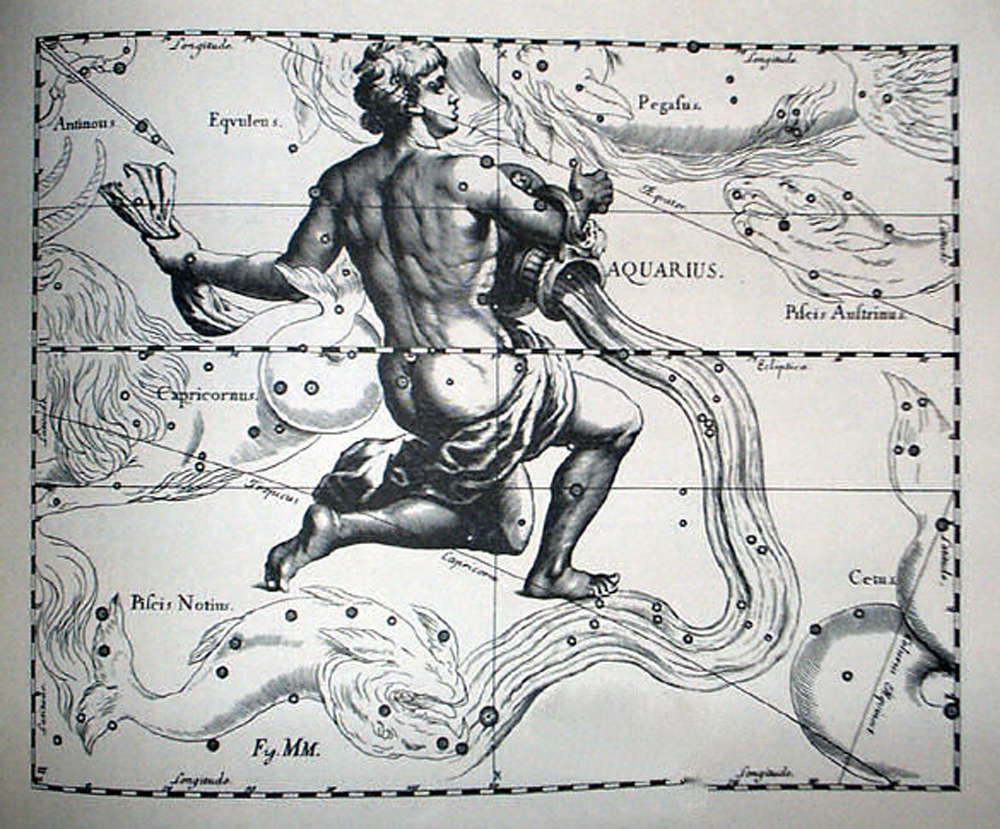
Stars in Aquarius
Aquarius is the 10th largest constellation, covering 980 square degrees. Despite its size, it does not contain any particularly bright stars, which makes it challenging to observe with the naked eye. Here are some of the notable stars within Aquarius:
Sadalsuud (α Aquarii)
Sadalsuud, the brightest star in Aquarius, is a yellow supergiant located about 540 light-years from Earth. Its name means “luck of lucks” in Arabic. With a mass six times that of the Sun and 2,200 times more luminous, Sadalsuud is a prominent feature of the constellation.
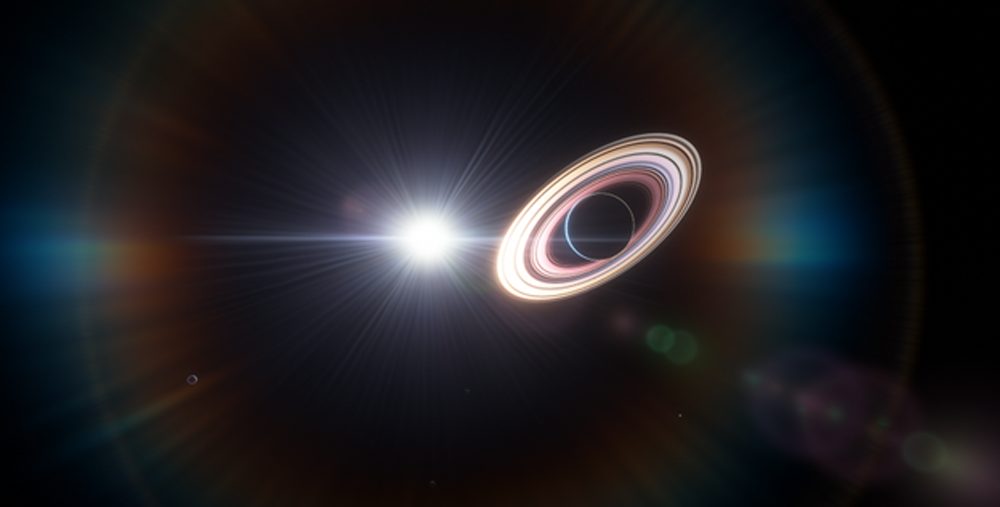
Sadalmelik (α Aquarii)
Sadalmelik is another yellow supergiant, approximately 800 light-years distant. It shines with an apparent magnitude of 2.95 and is 3,000 times more luminous than the Sun. The name Sadalmelik means “luck of the king.”
Skat (δ Aquarii)
Skat, also known as Delta Aquarii, has an apparent magnitude of 3.27 and is about 160 light-years away. Its name derives from the Arabic word for “leg” or “shin.” Skat is believed to be part of the Ursa Major Moving Group, a collection of stars sharing common velocities and origin.
Sadachbia (γ Aquarii)
Sadachbia, a spectroscopic binary star, is located 158 light-years from Earth. Its name means “luck of the homes” (tents) in Arabic. With an apparent magnitude of 3.84, Sadachbia contributes to the constellation’s character.
Sadaltager (ζ Aquarii)
Sadaltager is a binary star system located at the centre of the Water Jar asterism. It has an apparent magnitude of 4.42 and lies 103 light-years from Earth. The name means “luck of the merchant” in Arabic.
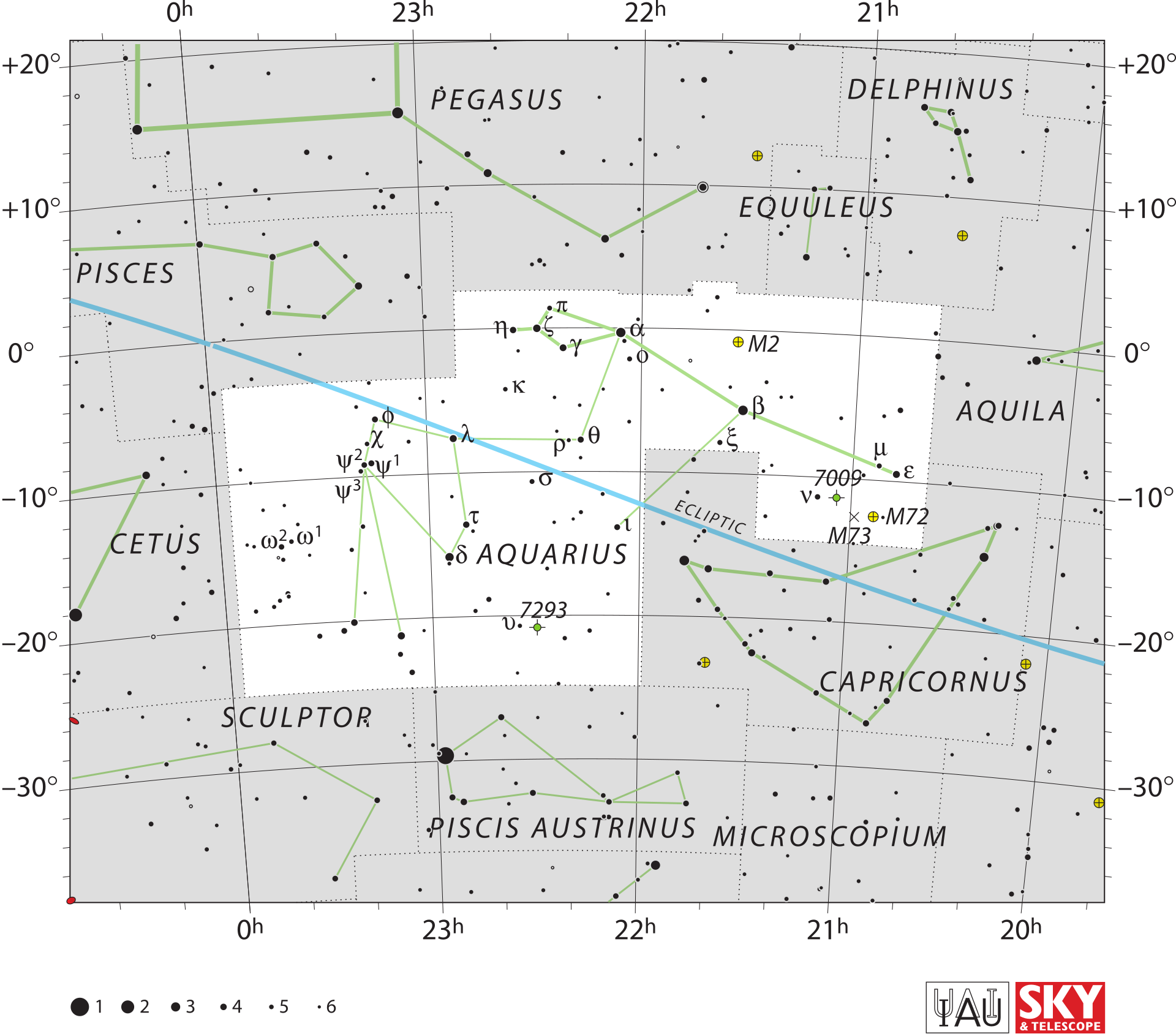
Deep Sky Objects
Aquarius is home to several fascinating deep sky objects, including globular clusters, nebulae, and galaxies.
Messier 2 (M2)
Messier 2 is a globular cluster situated about 37,500 light-years from Earth. It is one of the largest known globular clusters, containing approximately 150,000 stars. The cluster spans 175 light-years and is about 13 billion years old. It was discovered by the Italian astronomer Jean-Dominique Maraldi in 1746 and later catalogued by Charles Messier.
Messier 72 (M72)
Messier 72 is another globular cluster, located around 53,000 light-years away. This cluster is about 106 light-years in diameter and has an apparent magnitude of 9.3. Discovered by Pierre Méchain in 1780, M72 contains numerous blue giant stars and is considered a relatively young cluster.
Messier 73 (M73)
Messier 73 is an asterism of four stars that appear close together in the night sky but are not gravitationally bound. Initially believed to be a cluster, later analysis revealed that the stars are at different distances and moving in different directions. M73 is located about 2,500 light-years from Earth.
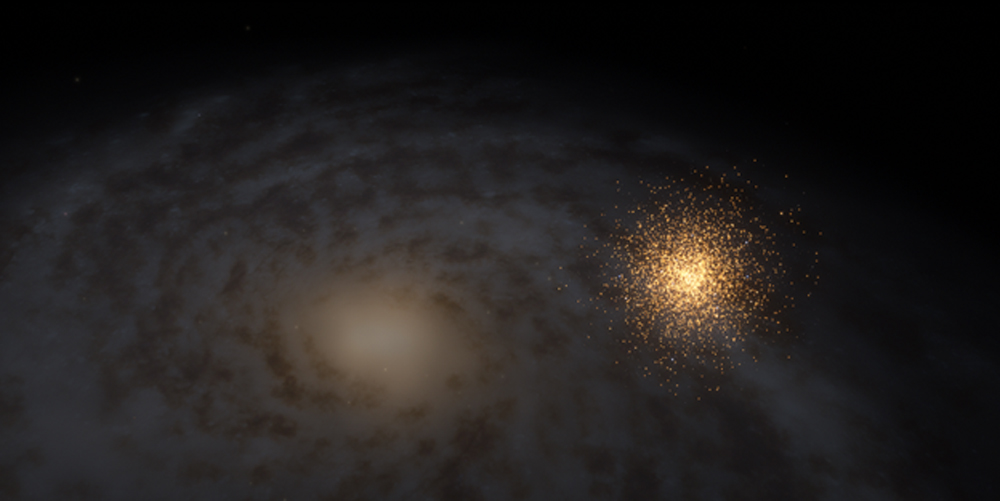
Saturn Nebula (NGC 7009)
The Saturn Nebula, named for its resemblance to the planet Saturn, is a planetary nebula formed by a low-mass star evolving into a white dwarf. The nebula’s central star has a luminosity of about 20 Suns and an apparent magnitude of 11.5. Discovered by William Herschel, the Saturn Nebula is approximately 2,400 light-years from Earth.
Helix Nebula (NGC 7293)
The Helix Nebula, also known as the Eye of God, is one of the closest bright planetary nebulae to Earth, at a distance of about 700 light-years. Discovered by Karl Ludwig Harding, this nebula spans 2.5 light-years and is notable for its intricate structure and the remnant stellar core at its centre, which will eventually become a white dwarf.
Aquarius Dwarf Galaxy (PGC 65367)
The Aquarius Dwarf Galaxy is an irregular dwarf galaxy located 3.1 million light-years from Earth. It is a member of the Local Group of galaxies and is notable for its blueshift, indicating it is moving towards the Milky Way.
Atoms for Peace Galaxy (NGC 7252)
The Atoms for Peace Galaxy is a peculiar elliptical galaxy approximately 220 million light-years away. It is the result of a collision between two disk galaxies around a billion years ago. The galaxy’s name was inspired by Dwight Eisenhower’s 1953 speech promoting peaceful nuclear energy. The galaxy contains more than 500 ultra-luminous clusters and a central pinwheel-shaped disk.
Meteor Showers
Constellation Aquarius is home to two notable meteor showers: the Delta Aquariids and the Eta Aquariids. The Delta Aquariids peak in late July and early August, producing around 20 meteors per hour under optimal viewing conditions. This shower is thought to originate from the debris of the comet 96P/Machholz, which has a unique orbital path that intersects Earth’s orbit. The Delta Aquariids are characterized by their faint meteors with long, consistent trails. On the other hand, the Eta Aquariids peak in early May, offering a more spectacular display with up to 55 meteors per hour.
These meteors are remnants of Halley’s Comet, and they are known for their swift, bright streaks that leave glowing trails across the sky. Observers in the Southern Hemisphere have the best views of both showers, though they are also visible in the Northern Hemisphere. Both meteor showers are best observed from dark, rural areas away from city lights, where the full splendour of the meteors can be appreciated. The showers provide a celestial treat, illuminating the night sky and connecting observers to the ongoing cosmic dance of comets and meteoroids.
Location and Visibility
Aquarius is strategically located on the celestial equator, making it accessible from virtually all parts of the globe. It is situated between Capricornus to the west and Pisces to the east, with the constellations Pegasus and Cetus to the north and south, respectively. The constellation is characterized by its Y-shaped asterism formed by its main stars: Sadalsuud (Beta Aquarii), Sadalmelik (Alpha Aquarii), and Skat (Delta Aquarii). Sadalsuud, the brightest star in Aquarius, is a yellow supergiant situated 540 light-years away, with a luminosity 2,200 times that of the Sun. Sadalmelik, another notable star, is a G-type supergiant 760 light-years from Earth, with an apparent magnitude of 2.94. Skat, a blue-white giant star, is 160 light-years distant and shines with a magnitude of 3.27.
Aquarius is also rich in meteor showers, with the Delta Aquariids peaking in late July and early August, and the Eta Aquariids peaking in early May, originating from the debris of Halley’s Comet. The Delta Aquariids produce around 20 meteors per hour under optimal conditions, while the Eta Aquariids can produce up to 55 meteors per hour.
To best observe Aquarius, it is essential to find a dark sky location with minimal light pollution. In urban areas, the use of a telescope or binoculars is highly recommended to resolve its fainter stars and deep-sky objects. The constellation’s position on the celestial equator allows it to be observed from both hemispheres, with the best viewing times being during late summer to early autumn evenings.
When to observe
Best viewed in late summer to early autumn, from August to October, when it reaches its highest point in the sky.
Where to observe
Ideal observation points are from both northern and southern hemispheres, with the best results in rural areas away from light pollution.
How to observe
Binoculars or a telescope are recommended for a better view of its stars and deep-sky objects, especially in areas with light pollution.
Aquarius and Modern Astronomy
Aquarius continues to be a point of interest in modern astronomy. One of its most notable features is the TRAPPIST-1 system, located about 40 light-years from Earth. The TRAPPIST-1 system, located in the constellation Aquarius, is one of the most intriguing discoveries in modern exoplanet research.
Situated about 40 light-years from Earth, this system features a red dwarf star, TRAPPIST-1, which is much cooler and smaller than our Sun, with about 9% of the Sun’s mass and 12% of its radius. Discovered in 2017 using the TRAPPIST (Transiting Planets and Planetesimals Small Telescope) in Chile, the system hosts at least seven Earth-sized exoplanets, making it a focal point for the study of potentially habitable worlds outside our solar system. The planets are designated TRAPPIST-1b through TRAPPIST-1h and all have been observed to transit their parent star, providing valuable data on their sizes, orbits, and potential compositions. Three of these planets, TRAPPIST-1e, TRAPPIST-1f, and TRAPPIST-1g, reside within the star’s habitable zone, where conditions might be right for liquid water to exist.
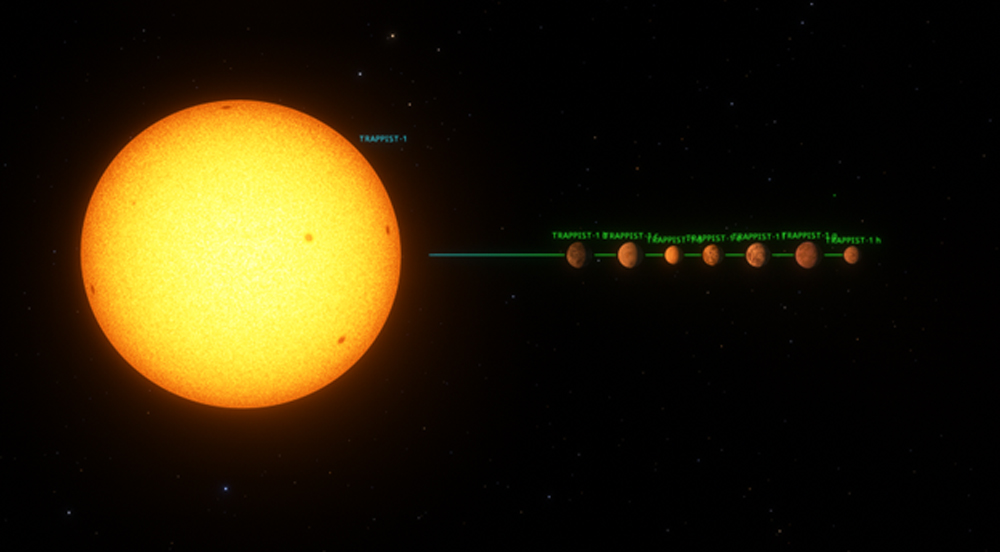
This discovery has significant implications for the search for extraterrestrial life, as these planets could possess the right conditions to support biological activity. The proximity of TRAPPIST-1 and its planets also makes them prime targets for further investigation by the James Webb Space Telescope and other future missions, which aim to analyse their atmospheres and search for biosignatures. The system’s study has already provided insights into planetary formation and the potential for life in systems vastly different from our own, marking it as a cornerstone in exoplanetary science.
